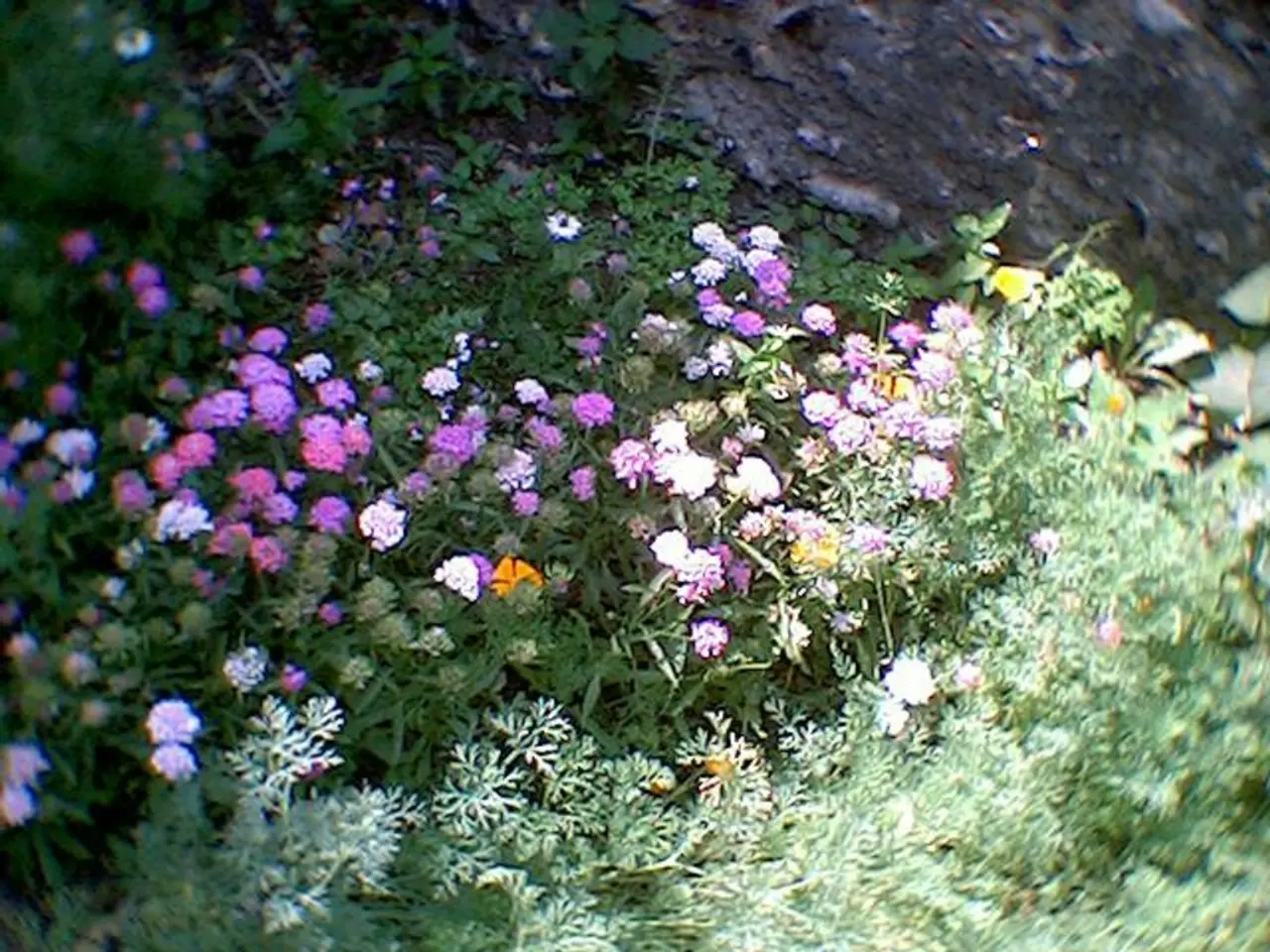Transform a Thriving Habitat for Pollinators with These 6 Indigenous Flowering Shrubs
In the quest to create a thriving pollinator garden, several native North American shrubs stand out for their ability to support bees, butterflies, and other beneficial insects. Here are some of the best choices:
1. **Summersweet (Clethra alnifolia)** Known as sweet pepperbush, this flowering shrub attracts many pollinators. Its small flowers grow in clusters on long racemes and bloom in late summer, providing a more continuous source of nectar. Summersweet grows best in USDA zones 3-9, in full sun or partial shade, and slightly acidic soil.
2. **Rubber Rabbitbrush (Chrysothamnus nauseosus)** This native shrub is a favourite among bees and butterflies. It tolerates dry soil, drought conditions, and heavy winds, making it an ideal choice for those living in arid regions. Rubber rabbitbrush can be grown in USDA zones 4-9 and needs a spot with full sun.
3. **Common Buttonbush (Cephalanthus occidentalis)** Notable for its round, golf ball-sized white flowers, Common Buttonbush is a great draw for pollinators. This shrub grows best in USDA zones 5-11 and is hardy in a wide range of climates, from the eastern halves of the United States and Canada to the southwest.
4. **Apache Plume (Fallugia paradoxa)** This showy flowering shrub, native to the southwestern United States, attracts pollinators with its white flowers that transform into large, fluffy seedheads. Apache Plume is drought-tolerant and suitable for xeriscaping gardens, requiring a location with full sun and tolerating dry soil.
5. **Winterberry Holly (Ilex verticillata)** This native shrub not only attracts butterflies and bees but also provides food for birds throughout the year. It produces red berries that persist into winter, making it a valuable addition to any pollinator garden. Winterberry is native to most of the eastern United States and Canada, and can grow as far north as zone 3.
6. **Serviceberry (Amelanchier spp.)** This pollinator-friendly eastern US native can be grown as a large shrub or small, multi-stemmed tree. Serviceberry provides spring flowers, purple fruit, and fall foliage, making it a versatile addition to any garden. It grows best in slightly acidic, well-drained soil and a spot with full sun, and can grow as tall as 25 feet.
7. **Pinxter Azalea (Rhododendron periclymenoides)** Known for its fragrant flowers, Pinxter Azalea is a native shrub that blooms in early spring, attracting pollinators during a time when fewer flowers are available. It is hardy in USDA zones 4-8.
By incorporating these native shrubs into your garden, you can create a vibrant habitat that supports wildlife throughout the growing season. Mixing them with other native flowers and plants can help to establish a diverse and resilient ecosystem.
- Embracing a pollinator-friendly lifestyle, one might consider the art of cooking, using locally sourced honey from these thriving gardens in various recipes, contributing to global cuisines.
- Fashion-and-beauty enthusiasts can incorporate elements of garden design into their homes, creating a harmonious blend of nature and style.
- Food-and-drink aficionados may discover new flavors from these pollinator gardens, inspiring innovative culinary creations.
- Home-and-garden enthusiasts can expand their knowledge of horticulture through online education in the realm of gardening.
- Personal growth and mindfulness can be fostered while tending to these vibrant gardens, promoting a sense of connection with nature.
- Proper car-maintenance is essential for those planning road trips to visit various pollinator gardens across the country.
- Productivity can be increased by implementing goal-setting and lifelong learning strategies in the pursuit of a thriving pollinator garden.
- Career development in fields such as ecology or sustainable agriculture can stem from a passion for pollinator gardening.
- Electric vehicles are an environmentally-friendly choice for eco-conscious gardeners, reducing carbon footprint while exploring new gardens.
- Adventure-travelers can seek out pollinator gardens as unique destinations for their global travels.
- Online education platforms offer courses on various topics, such as car-maintenance, to better prepare for these travel adventures.
- A successful job-search can be enhanced through personal growth, skills training, and a commitment to environmental consciousness.
- Cultural-travel opportunities abound as one seeks to learn about the diverse plants and practices of different pollinator gardens worldwide.
- Budget-travel options can make these cultural experiences accessible to all garden enthusiasts.
- Learning about different gardening techniques, adaptations to climate changes, and local plant species can be a rewarding part of lifelong learning.
- Goal-setting and skill-training in various aspects of gardening can lead to increased self-sufficiency and personal satisfaction.
- Sports fans won't be left out, as they can pair their love for the Champions League, NFL, WNBA, baseball, hockey, golf, and other leagues with their passion for pollinator gardens.
- Sports-betting enthusiasts can introduce an element of excitement to their garden-related travels, wagering on the success of various pollinator gardens.
- European leagues, such as the premier league, Laliga, Serie A, and NCAAs can be a source of inspiration for creating a pollinator garden overseas.
- Basketball fans can indulge in their passion for the game while embracing eco-friendly practices through the support of local pollinator gardens.
- Car-racing enthusiasts can explore pollinator gardens in different regions, adding a new dimension to their racing experiences.
- Horse-racing aficionados can incorporate their love for horses into the creation of a pollinator garden, offering a harmonious blend of equestrian and horticultural pursuits.
- Weather updates are essential for gardeners, so weather forecasting can be a valuable skill for maintaining a thriving pollinator garden.
- The beauty and significance of these pollinator gardens can inspire a sense of mindfulness and appreciation for the natural world.
- The diverse array of sports, from football to tennis, can provide opportunities to meet like-minded garden enthusiasts and share tips and experiences.
- Sports analysis can help gardeners make informed decisions about plant selection, cultivation techniques, and garden design.
- A commitment to environmental consciousness and pollinator conservation can lead to personal growth and renewed appreciation for the wonders of nature.
- In the end, the pursuit of a thriving pollinator garden offers endless possibilities for learning, self-development, and connection with the natural world, making it a rewarding and fulfilling journey.




